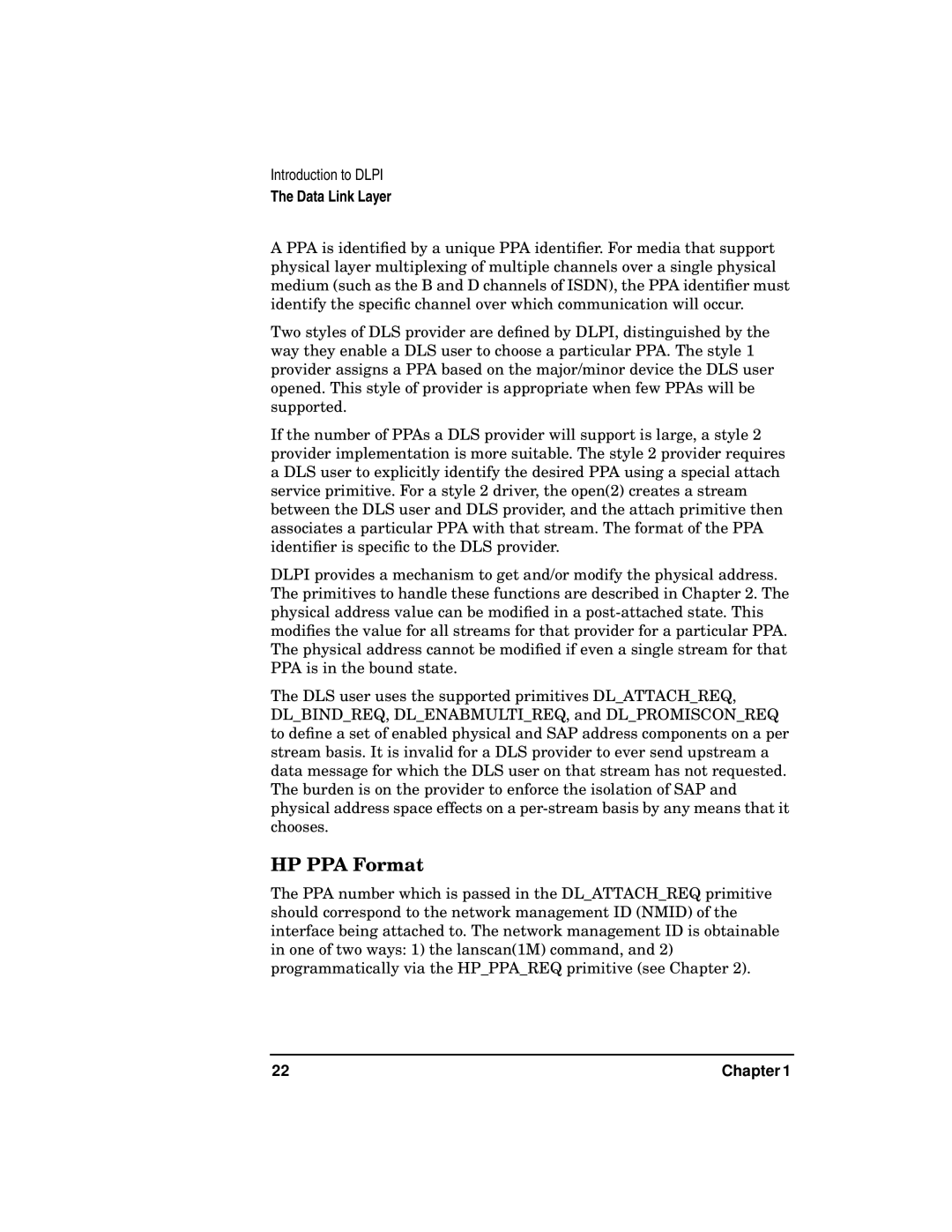Introduction to DLPI
The Data Link Layer
A PPA is identified by a unique PPA identifier. For media that support physical layer multiplexing of multiple channels over a single physical medium (such as the B and D channels of ISDN), the PPA identifier must identify the specific channel over which communication will occur.
Two styles of DLS provider are defined by DLPI, distinguished by the way they enable a DLS user to choose a particular PPA. The style 1 provider assigns a PPA based on the major/minor device the DLS user opened. This style of provider is appropriate when few PPAs will be supported.
If the number of PPAs a DLS provider will support is large, a style 2 provider implementation is more suitable. The style 2 provider requires a DLS user to explicitly identify the desired PPA using a special attach service primitive. For a style 2 driver, the open(2) creates a stream between the DLS user and DLS provider, and the attach primitive then associates a particular PPA with that stream. The format of the PPA identifier is specific to the DLS provider.
DLPI provides a mechanism to get and/or modify the physical address. The primitives to handle these functions are described in Chapter 2. The physical address value can be modified in a
The DLS user uses the supported primitives DL_ATTACH_REQ,
DL_BIND_REQ, DL_ENABMULTI_REQ, and DL_PROMISCON_REQ to define a set of enabled physical and SAP address components on a per stream basis. It is invalid for a DLS provider to ever send upstream a data message for which the DLS user on that stream has not requested. The burden is on the provider to enforce the isolation of SAP and physical address space effects on a
HP PPA Format
The PPA number which is passed in the DL_ATTACH_REQ primitive should correspond to the network management ID (NMID) of the interface being attached to. The network management ID is obtainable in one of two ways: 1) the lanscan(1M) command, and 2) programmatically via the HP_PPA_REQ primitive (see Chapter 2).
22 | Chapter 1 |
